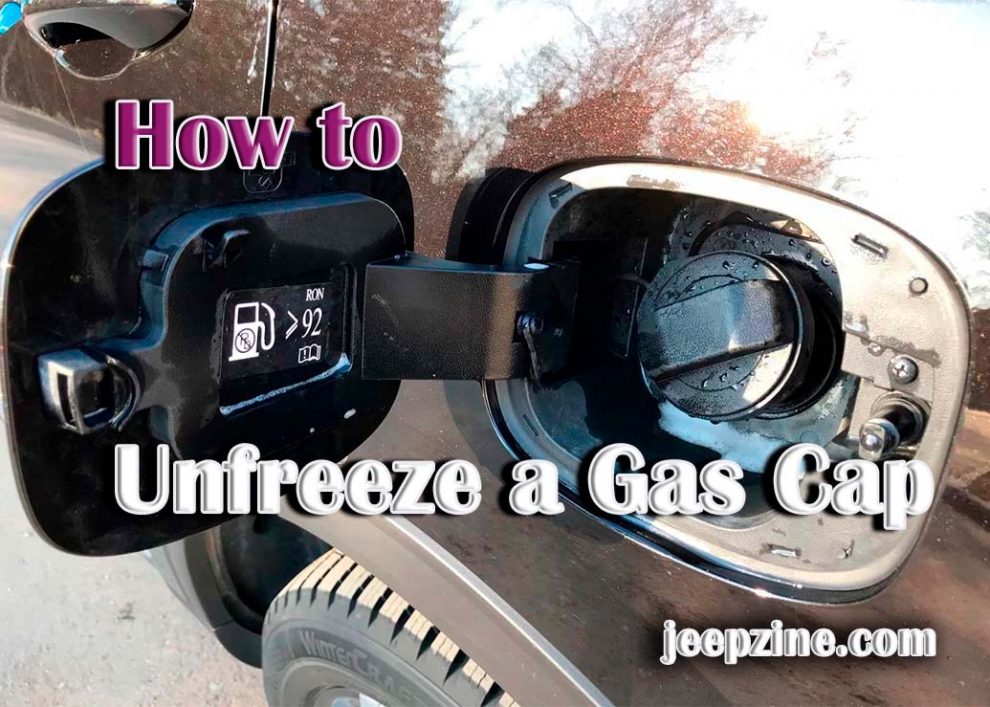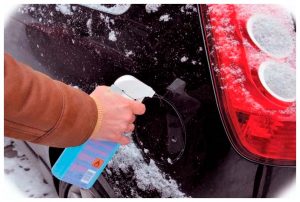Frozen gas caps can be a major hassle for any driver. If you’re dealing with a frozen gas cap, this article is here to help. In this guide, we’ll cover the causes of a frozen gas cap, the warning signs of it happening, the steps to unfreeze it quickly and easily, and some prevention tips to keep your gas cap from freezing in the future.
Causes of a Frozen Gas Cap
There are several factors that can contribute to your gas cap freezing. These include cold weather conditions, faulty valves or pressure relief systems, and corroded seals or valves. Here’s what you need to know about each one:
-
Cold Weather: Cold temperatures are one of the primary contributing factors when it comes to frozen gas caps. When temperatures drop below 0°F (-18°C), your car’s metal components become more susceptible to freezing up due to condensation that forms on them from humidity in the air when exposed to extreme temperatures.
-
Faulty Valve or Pressure Relief System: In some cases, an issue with either your vehicle’s valve or pressure relief system can lead to a frozen gas cap as well. It happens because these components aren’t designed to withstand cold weather and can become brittle when exposed to extreme temperatures.
-
Corroded Valves or Seals: If the valves and seals on your gas cap are corroded, they may be more vulnerable to freezing up when exposed to cold temperatures. This is because corrosion weakens the metal components and makes them more likely to freeze when exposed to extremely low temperatures.
Warning Signs of a Frozen Gas Cap
If you suspect your gas cap has frozen, there are several warning signs you should look out for that could indicate an issue with it:
-
Issues Filling Up the Tank: One of the first signs that your gas cap may be frozen is if you’re having difficulty filling up your tank with fuel. This can be due to a build-up of condensation inside the fuel tank that prevents fuel from entering it properly, which could indicate an issue with your frozen gas cap.
-
Unpleasant Fuel Odors: If you start smelling strong gasoline odors coming from within or near your vehicle, this could be another sign that something is wrong with your gas cap. If the smell is coming from inside the car itself, it could mean there’s a build-up of fuel vapor in the passenger compartment that’s escaping through the vents due to a faulty seal on the gas cap.
-
Difficulty Opening and Closing the Fuel Door: If you’re having difficulty opening or closing your fuel door, this could be another indication that something is wrong with your gas cap. In some cases, frozen gas caps make it more difficult to access the fuel door, so you may need to unfreeze it to get back into your car’s tank.
Steps for Unfreezing Your Gas Cap
If you suspect that your gas cap has frozen, there are several steps you can take to unfreeze it quickly and easily:
-
Check the Temperature Outside: Before attempting other steps, check the outside temperature first. If temperatures are below 0°F (-18°C), then your gas cap will likely freeze due to condensation forming inside of it when exposed to extremely cold temperatures.
-
Investigate the Valves and Seals of Your Gas Cap: Once you’ve confirmed cold temperatures as a possible cause for a frozen gas cap, inspect all valves and seals on your vehicle for any signs of corrosion or wear-and-tear. If there are any signs of corrosion or other damage, this could be a contributing factor to your gas cap freezing up.
-
Use Heat to Quickly Unfreeze Your Gas Cap: The quickest way to unfreeze your gas cap is by using heat. You can try using a hair dryer, as the hot air from it should help quickly melt away any ice that has formed inside the gas cap and make it easier to reaccess it. Just be sure not to get too close to the dryer and risk burning yourself or damaging the gas cap.
- Using a De-Icer Spray: If your gas cap has frozen, you can use a de-icer spray to unfreeze it. This should be done outdoors in an open area as the chemicals in the spray are flammable. Start by spraying the outside of the cap and sealing it with the de-icer agent until lightly coated; then wait several minutes before opening it up. If this method doesn’t work, you can move on to one of the other solutions listed below.
Prevention Tips for Keeping Your Gas Cap from Freezing
To prevent your gas cap from freezing in the future, here are some helpful tips:
-
Regularly Check and Clean the Valves and Seals: Be sure to regularly check all valves and seals on your car for any signs of corrosion or damage that could cause them to freeze when exposed to cold temperatures. You should also ensure they’re properly cleaned of any dirt or grime build-up that could contribute to freezing.
-
Avoid Filling Up Too Late in The Day: It’s best practice to fill up your tank early when temperatures are at their coldest. This will help prevent condensation from forming inside your gas cap and contribute towards freezing up.
-
Install a Heating Element in The Fuel Line: If you live in an area with extremely cold winters, consider installing a heating element in your car’s fuel line. This will help keep the fuel warm and prevent it from freezing when exposed to extreme temperatures.
Conclusion
Frozen gas caps can be a major hassle for any driver, but luckily, they’re easy to unfreeze if you know what steps to take. By understanding the causes of a frozen gas cap and following the steps outlined above, you can quickly and easily unfreeze your gas cap and return to the road. Additionally, by following these prevention tips and regularly checking for signs of wear and tear or corrosion on valves or seals, you can help ensure that your gas cap stays unfrozen even during colder months!


 Cold Weather: Cold temperatures are one of the primary contributing factors when it comes to frozen gas caps. When temperatures drop below 0°F (-18°C), your car’s metal components become more susceptible to freezing up due to condensation that forms on them from humidity in the air when exposed to extreme temperatures.
Cold Weather: Cold temperatures are one of the primary contributing factors when it comes to frozen gas caps. When temperatures drop below 0°F (-18°C), your car’s metal components become more susceptible to freezing up due to condensation that forms on them from humidity in the air when exposed to extreme temperatures. Use Heat to Quickly Unfreeze Your Gas Cap: The quickest way to unfreeze your gas cap is by using heat. You can try using a hair dryer, as the hot air from it should help quickly melt away any ice that has formed inside the gas cap and make it easier to reaccess it. Just be sure not to get too close to the dryer and risk burning yourself or damaging the gas cap.
Use Heat to Quickly Unfreeze Your Gas Cap: The quickest way to unfreeze your gas cap is by using heat. You can try using a hair dryer, as the hot air from it should help quickly melt away any ice that has formed inside the gas cap and make it easier to reaccess it. Just be sure not to get too close to the dryer and risk burning yourself or damaging the gas cap.
Add Comment